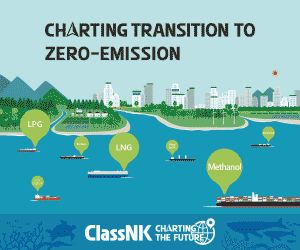DNV has published its “Energy Transition Outlook CCS to 2050” report, forecasting that carbon capture and storage (CCS) is reaching a pivotal moment, with global capacity set to quadruple by 2030 and long-term growth driven by hard-to-decarbonize sectors like shipping.
According to DNV, up to now, growth has been limited and largely associated with pilot projects but a sharp increase in capacity in the project pipeline indicates that CCS is at a turning point. The immediate rise in capacity is being driven by short-term scale up in North America and Europe, with natural gas processing still the main application for the technology.
In the longer term, CCS is crucial for addressing sectors that are challenging to decarbonize, such as steel and cement production. These hard-to-decarbonize industries are forecast to be the main driver of growth from 2030 onwards, accounting for 41% of annual CO2 captured by mid-century, DNV finds. Maritime onboard capture is expected to scale from the 2040s in parts of the global shipping fleet.
As the technologies mature and scale, the average costs will drop by an average of 40% by 2050.
Carbon capture and storage technologies are a necessity for ensuring that CO2 emitted by fossil-fuel combustion is stopped from reaching the atmosphere and for keeping the goals of the Paris Agreement alive
… said Ditlev Engel, CEO, Energy Systems at DNV.
Key findings
The turning point for CCS has arrived, with capture and storage capacity expected to quadruple by 2030
- North America and Europe will drive this short-term scale up, with natural gas production still the main application. We will also see growth across many sectors and regions, including first-of-a-kind applications.
- Cumulative investments in CCS in the coming five years are expected to reach about USD 80bn.
- Global economic instability and budgetary pressures may pose risks to CCS deployment, potentially shifting priorities and removing finance needed.
After 2030, the strongest growth will be in hard-to-decarbonize sectors, with manufacturing accounting for 41% of annual CO₂ captured by mid-century
- CCS is essential to address hard-to-decarbonize emissions from manufacturing sectors, like steel production, and from maritime transport, where onboard capture is expected from the 2040s in parts of the global shipping fleet.
- Manufacturing, particularly cement and chemicals, will be the biggest application of CCS in Europe; in North America and the Middle East it will be hydrogen and ammonia; in China, coal power.
- Although capture from natural gas production will continue, its share falls from 34% in 2030 to 6% of total capture in 2050.

CCS will grow to capture 6% of global CO₂ emissions in 2050; that falls significantly short of what is required for any net-zero outcome
- Uptake will grow from 41 MtCO₂/yr captured and stored today to 1,300 MtCO₂/yr in 2050.
- Despite positive policy and investment signals, CCS will need to scale to over six times the forecast level to reach DNV’s Pathway to Net Zero Emissions. Scaling is particularly important in hard-to-decarbonize sectors.
- CCS is growing where there is policy support. In most sectors, it will only scale with mandates and price incentives. Europe has the strongest price incentives and will catch up with – and eventually surpass – current North American deployment dominance.
- Average costs will decline by around 40% towards 2050 as technologies mature and scale.
Carbon dioxide removal (CDR) will capture 330 MtCO₂ in 2050 – one-quarter of total captured emissions
- As global emissions continue to accumulate, CDR becomes important to reduce the large carbon budget overshoot.
- Bioenergy with CCS (BECCS) is generally the cheaper CDR option and will be used primarily in renewable biomass for power and manufacturing.
- Direct air capture (DAC) costs remain higher at around USD 350/tCO₂ through 2050, but voluntary and compliance carbon markets still ensure the capture of 32 MtCO₂ in 2040 and 84 MtCO₂ in 2050.
- Beyond our forecast period, an enormous amount of CDR, alongside nature-based solutions, will be required to ensure net-negative emissions
CCS is entering a pivotal decade and the scale of ambition and investment must increase dramatically. It remains essential for hard-to-decarbonize sectors like cement, steel, chemicals, and maritime transport
… explained Jamie Burrows, Global Segment Lead CCUS, Energy Systems at DNV.


































































